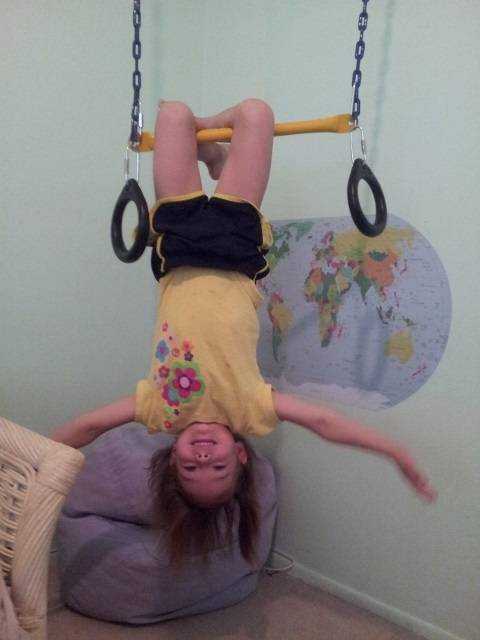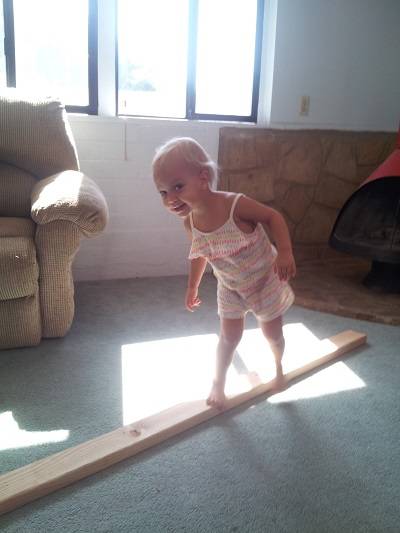Although organized sports usually start in elementary school, early childhood is not a dead zone as far as athleticism is concerned. At this stage in development, providing space for children to play has numerous benefits, aside from the fact that kids enjoy it. Physical play in particular improves motor skills, plants early seeds of athleticism, encourages neurological development, and teaches cooperation and teamwork.
Nevertheless, studies also show physical play, particularly in an outdoor setting, is becoming less and less popular with modern kids. This is true even during early childhood, when children are most likely to partake in physical play, and is contributing to a lot of the health concerns that are becoming increasingly common in children and adolescents. It seems self-evident that moving and learning to use the body efficiently from a young age is a good thing. So why is this form of play becoming less common, and how can we, as parents, caregivers, and coaches, encourage physical play in young children?
First, let’s think about the why behind the problem. If it’s true that physical play is becoming less common during early childhood, why might that be the case?
1. Parents Don’t Play
Young children do seem to have more of a natural proclivity to play, regardless of adult involvement. In a study in the Journal of Play, young children were more likely to engage in activities like jump rope and chase than their older peers. Nevertheless, according to a 2012 research review published in the Journal of Pediatric Nursing, “Active adult involvement, increased creativity of parents during play, and role modeling especially by mothers were all perceived by parents to promote physical activity among preschoolers.”
The fact is, kids aren’t that different from you and me. If your child has the choice between sitting in an air-conditioned house with her iPad or going outside in the hot weather to jump rope, she’s probably going to pick the first option. The problem is, parents are also becoming increasingly clueless as to how to play. I read a recent article reporting that parents are now hiring “playdate consultants” to come into their homes and teach their children how to play most effectively. If parents or caregivers don’t demonstrate physical play is important and worthwhile, children are going to have a harder time getting the message.
2. Safety, Liability, and Social Pressure

Over the last year I’ve read a lot of articles bemoaning the rise of the “helicopter parent”. While I think this is true to some extent, as a parent I’ve also noticed that there’s a certain amount of social pressure involved. If the safety obsession exists, it is a cultural phenomenon, not a purely parental one. One recent article argues that parents don’t let their children engage in outdoor play because of other people in the neighborhood’s concern for their chidlren’s safety or lack thereof.
Even on the playground, there’s a whole list of social taboos parents have to learn. Don’t let your child climb up the slide, make sure they don’t walk in front of the swings, stay within six feet of them at all times, and NEVER condone rock throwing, even if there’s nobody around. Honestly, I get exhausted just thinking about going to the playground. I’d much rather just take my kids to a big field and let them run around like the wild things they are.
3. Screen Time
I’ve written about this before, and it should be obvious that increased time staring at screens affects children’s desire to engage in physical play. Screen time is an easy and convenient solution for parents, particularly during early childhood, but I think we sometimes forget it’s also an easier choice for kids, due to the effects of computer and television screens on brain chemistry. New research also suggests the time children spend looking at screens affects not only their brain, but also their cardiovascular health.
Of course, there are many more factors that contribute to growing lack of physical play during early childhood. It’s easy to make lists of problems, but finding a solution is the hard part. Here are a few things that have helped my husband and I encourage our two young children to engage in physical play:

- Provide a space for indoor and outdoor play. It doesn’t have to be fancy, nor does it have to be outside. We live in Phoenix and my children just don’t want to go outside when it’s 115 degrees, so we’ve given them some indoor options for play. My five-year-old spends most of her day hanging on the “flying trapeze” we installed in her room, and my two-year-old loves balancing on a two-by-four.
- Set aside time to play with your children. We’ve tried to make a habit of going to the park at least once a week to play as a family. Involve them in your physical activities when you can. Get your children some of their own WOD toys or a small yoga mat so they can follow along and feel involved.
- Limit screen time. This is often easier said than done, but I think awareness is key. Just like it’s easy for your child to zone out while watching a movie, it’s easy for parents to get involved with their tasks and forget how long their kids have actually been in front of a screen. With my own children, I’ve found that setting a timer helps me keep track of how long they’ve been watching a show or playing a computer game.
- Don’t make play a chore. As research suggests and experience often confirms, young kids are already becoming hesitant to partake in physical play. Try to make physical play an adventure that kids can get excited about, not something they do to keep from being bored.
Most importantly, remember early childhood is important and foundational. It’s easy to let these years slip by without seeing the potential these amazing little guys and girls actually possess. When your child does the monkey bars for the first time or comes running to you with breaking news that she just picked up a really heavy rock while you’re in the middle of planning the monthly budget, take the time to listen, and maybe even let her show you.
These feats of strength and power might seem small to us adults, but who knows? Before you know it, your little one might be doing this:
Further Reading:
1. J.P. Chaput, et. al., “Combined associations between moderate to vigorous physical activity and sedentary behavior with cardiometabolic risk factors in children.” Journal of Applied Physiology, Nutrition, and Metabolism. May 2013, Vol. 35 (5).
2. Eric A. Hodges, et. al., “Promoting Physical Activity in Preschoolers to Prevent Obesity: A Review of the Literature.” Journal of Pediatric Nursing 28(1) (2012).
3. Play England: Play and Exercise in Early Years, 2008.
4. Sarah Goodyear, “No Kids Allowed: How Our Street Design is Killing Play.” The Atlantic Cities. August 2013.
5. Robyn M. Holmes, “The Outdoor Recess Activities of Children at an Urban School.” The Journal of Play 4(3) (2012).
6. Peter Bray, “The Decline of Play and the Rise of Psychopathology in Children and Adolescents.” American Journal of Play 3(4) (2012).
Photos courtesy of Nicole Crawford.






